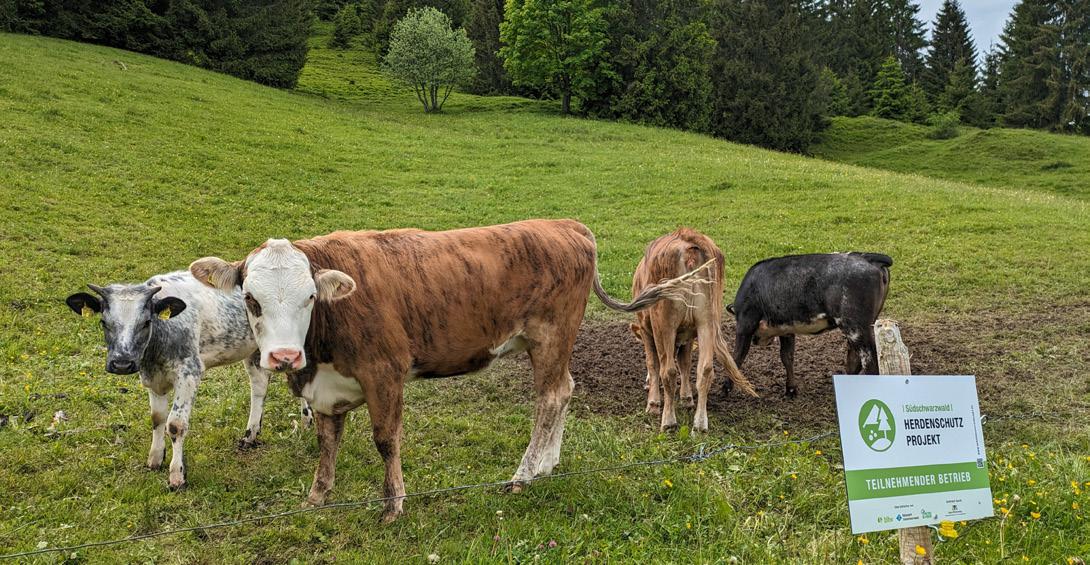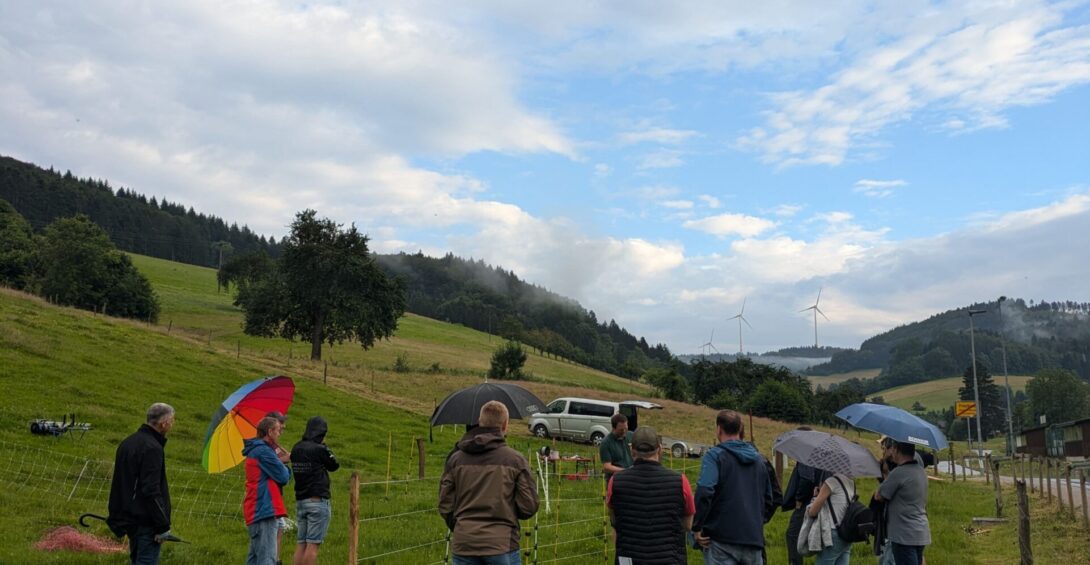Herd protection training in the wolf-repopulated areas of the Southern Black Forest
In Baden-Württemberg, where the wolf had completely disappeared, the species reappeared in 2015. To tackle predation in the Black Forest, farming organisations are working with the ministry and the park to train farmers in herd protection methods and find concrete solutions to farmers’ difficulties.
Wolf return in Baden-Württemberg since 2015
Until 2015, the wolf was considered an extinct species in Germany since the mid-19th century. But in the 1990s, a new European legal framework, in particular the Habitats Directive, began to pave the way for its return to Europe. In Baden-Württemberg and other federal states, the species has made a comeback since 2015. In 2024, 1,601 wolves and 209 packs were reported, including 3 wolves in Baden-Württemberg
With the return of the wolf, many livestock farms are facing major challenges. Only 4% wolf attacks are on cattle, with the majority (90%) on sheep and goats. However, in areas where the species had disappeared, such as Baden-Württemberg, the measures and practices used to protect herds have also disappeared. Since the first attack on a young cow in Baden-Württemberg in November 2021, repeated attacks on cattle by individual wolves have been confirmed.
Extensive grazing is an essential part of the species-rich grassland ecosystem and the maintenance of the cultural landscape in the black forest. As wolves make a comeback in areas that have not experienced predation for decades, it is vital to support farmers in their efforts to protect their herds.
Training farmers to reintroduce livestock protection measures
Livestock protection in wolf repopulated areas is a new learning process that is not always easy. The “Implementation of livestock protection measures in certain areas of the southern Black Forest” project was launched to overcome and analyse the obstacles to the practical implementation of livestock protection measures mainly for cattle. The initiative aims to train farmers, transfer knowledge and exchange views with policy makers.
Pilot livestock farms in the southern Black Forest are being advised and supported in the planning, application and implementation of livestock protection measures. The farms range from organic to conventional, with suckler cows, dairy cows, small ruminants, some sheep and goats, and different types of grassland and slopes.
Other support activities for farmers are proposed:
- Farm visits and exchanges with farmers experienced in working with herd protection dogs or any other local innovate herd protection experience,
- Events demonstrating fencing and combinations of protection types according to the type and age of livestock, from the practical side,
- Training sessions on funding opportunities for herd protection measures,
- Online resources available to all (recommendations for livestock protection, factsheets on different types of protective fencing, factsheets on livestock insurance, etc.).
Towards better herd protection throughout the Black Forest mountains?
A total of 15 pilot farms are being closely supported to improve the implementation of protection measures for their livestock, to test new innovations and report to decision makers.
The project will also have an impact beyond the pilot farms. Thanks to the resources that are disseminated to livestock farmers and the public events (conferences, training courses) that attract hundreds of farmers from all over Baden-Württemberg, it is becoming a real networking and mutual learning opportunity for farmers. The initiative will therefore contribute to better protection of herds throughout the state and to a better coexistence between mountain farming and wolves.
In addition, an important outcome of the project will be to determine whether the herd protection measures described as appropriate by the Ministry are sensible and feasible for livestock farmers in the Black Forest (particularly in terms of the time spent by the farmer implementing the measures or the difficulties associated with the geographical constraints of mountainous terrain). It is also hoped to determine how effective these measures are in protecting livestock from wolf attacks.

